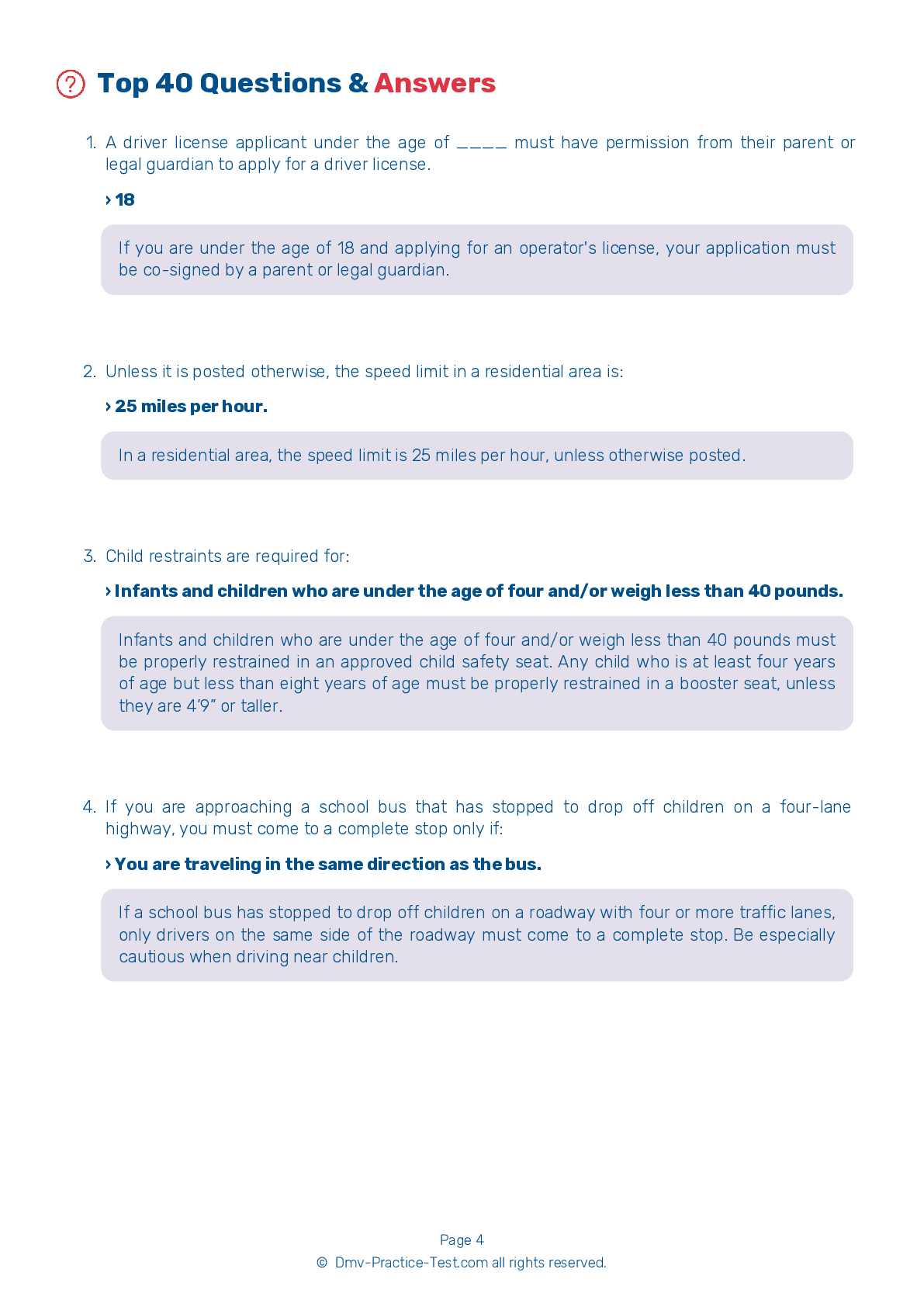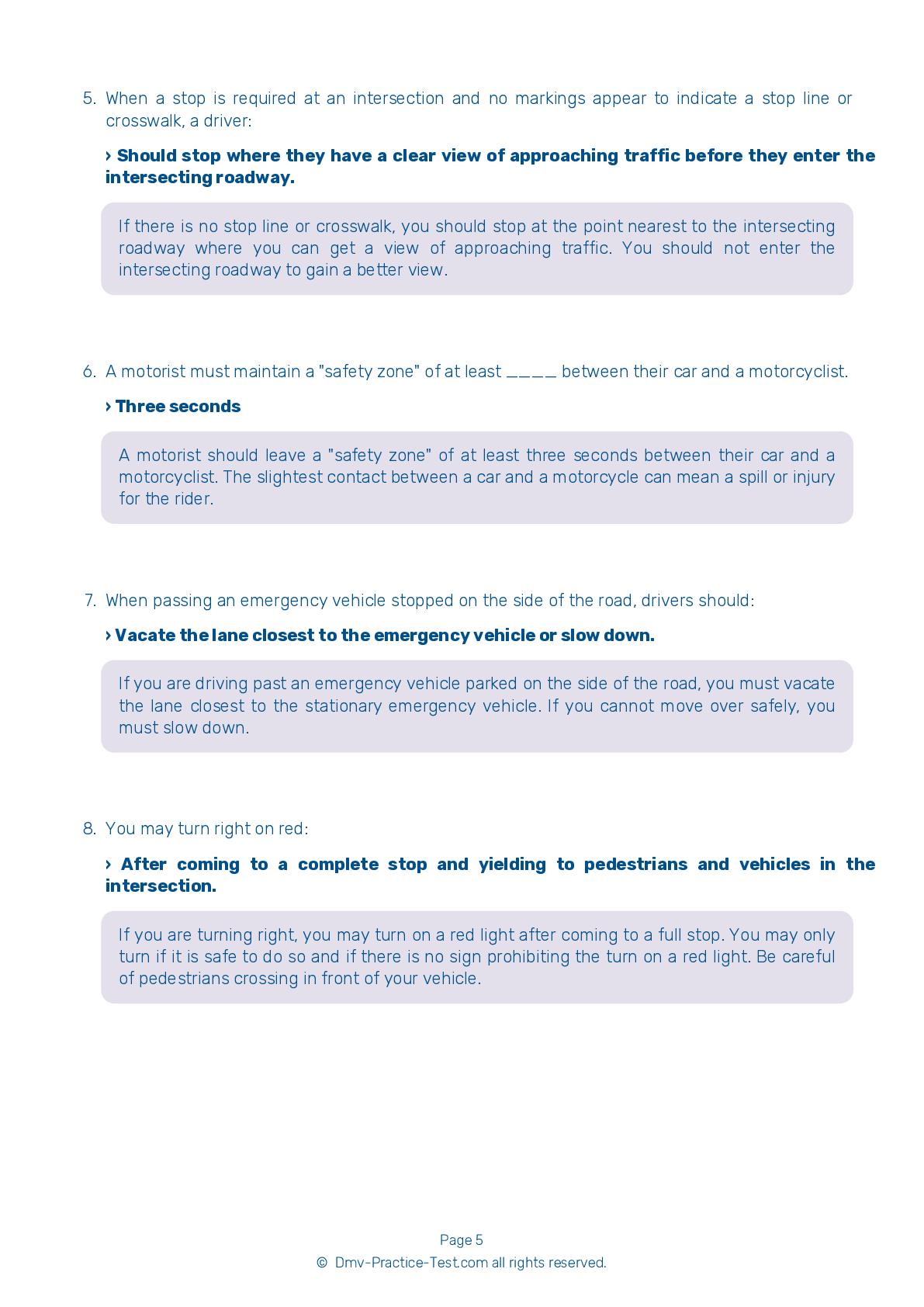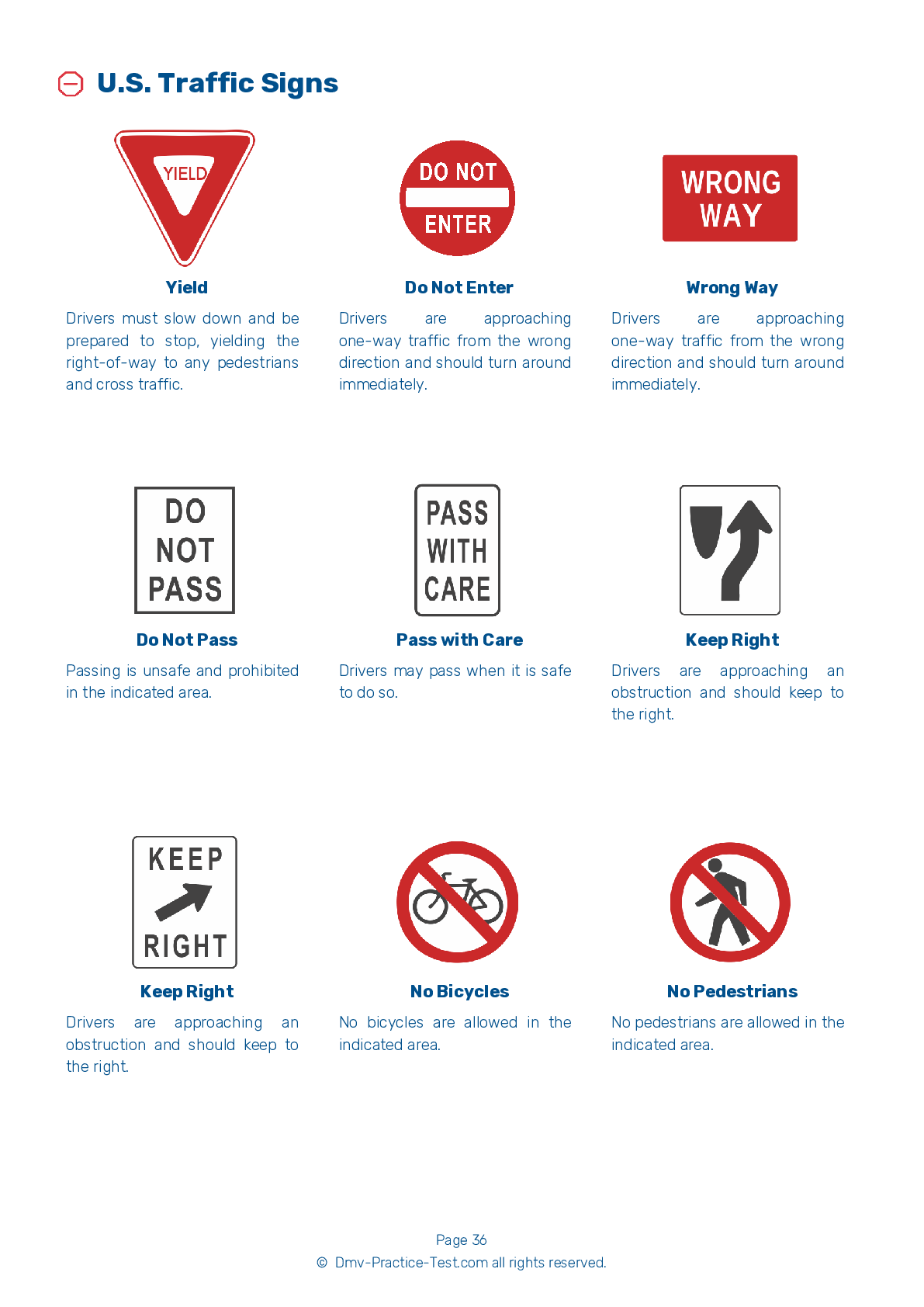FREE Ohio DMV Practice Test #7 Page 5 of 5
The practise exams for Ohio's DMV have been revised for January 2025. It comprises questions based on the most important traffic signals and laws for 2025 from the Ohio Driver Handbook. To study for the DMV driving permit test and driver's licence exam, use actual questions that are very similar (often identical!) to the DMV driving permit test and driver's licence exam.
Each question on the practise exam has a tip and explanation to help you recall the ideas. Questions about traffic rules, traffic signs, and driving statutes, as well as knowledge from the Driver Handbook, will be included in the written portion of the official Ohio DMV test.
You must properly answer 35 of the 40 questions to receive a passing mark. To help you prepare for your instruction permit or driver's licence, take this practise test from the Ohio Department of Motor Vehicles.
The DMV exam is offered in a variety of languages.
Using any form of testing help will result in an automatic fail, and the DMV may take further action against your driver's licence, so avoid it.
33 . This sign means:

Warning signs are usually diamond-shaped with black markings on a yellow background. They alert drivers to upcoming hazards. This sign indicates that drivers are approaching a steep hill and should prepare to adjust their speeds to continue to drive safely.
34 . On long trips, you can prevent drowsiness by:
To prevent drowsiness on long trips, you should schedule regular stops. Give yourself time to rest and stretch, even if you are not feeling tired.
35 . When you see this sign, you must:

Any eight-sided sign is a stop sign. At an intersection with a stop sign, you must stop completely and check for pedestrians and cross traffic in the intersection. Wait for the intersection to clear before proceeding.
36 . Anything that requires you to ____ could cause you to crash.
Anything that causes you to take your attention away from driving, take your eyes off the road, and/or take your hands off the wheel is a distraction.
37 . At dusk or on overcast days, you should:
At dusk or on overcast days, you must turn on your headlights. Dim your lights to their low beam setting when within 1,000 feet of an approaching vehicle and when within 500 feet of a vehicle that you are following. When driving in poor weather, always use your low beams.
38 . On the freeway, you see a "Merging traffic“ sign. You should:

When on a roadway with two or more lanes, you should make room for entering vehicles. If there is no one driving next to you, move over one lane.
39 . When driving on wet pavement, it's important to remember:
Wet roadway surfaces can be dangerously slick, especially immediately following a rainfall. When you are driving on wet roads, your vehicle is traveling on a thin layer of oil, dirt, and water. Slow down when there is heavy rain, standing water, or slush on the road to reduce the risk of your wheels losing traction on the slick surface.
40 . To change lanes you should:
Before changing lanes, you should activate your turn signal in the appropriate direction and check your rearview and side mirrors. Look over your shoulder in the direction you plan to move in order to check your blind spot and check the far lane to be sure no one else is trying to enter the same lane as you. Change lanes when you are sure it is safe to do so.
See the exact questions that will be on the 2025 Ohio DMV exam.
99.2% of people who use the cheat sheet pass the FIRST TIME
LT gives us an insight on how the cheat sheet provided her with all the study questions she needed before taking her test.
Joe initially studied with the handbook and failed his test, he eventually found us online, studied and pass his test the first time around.



